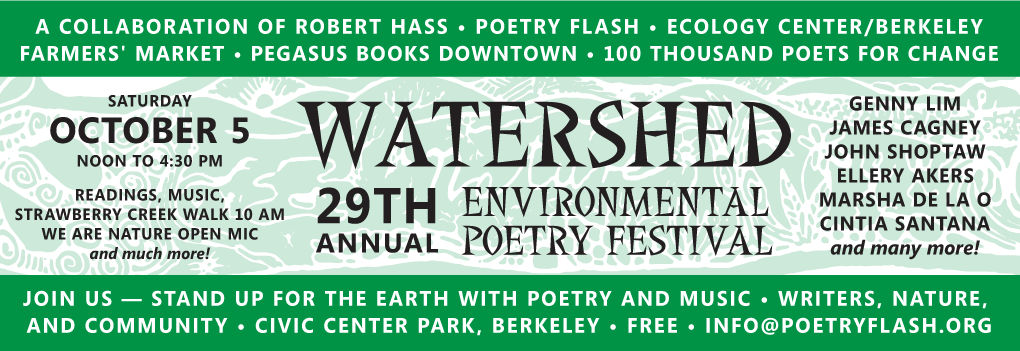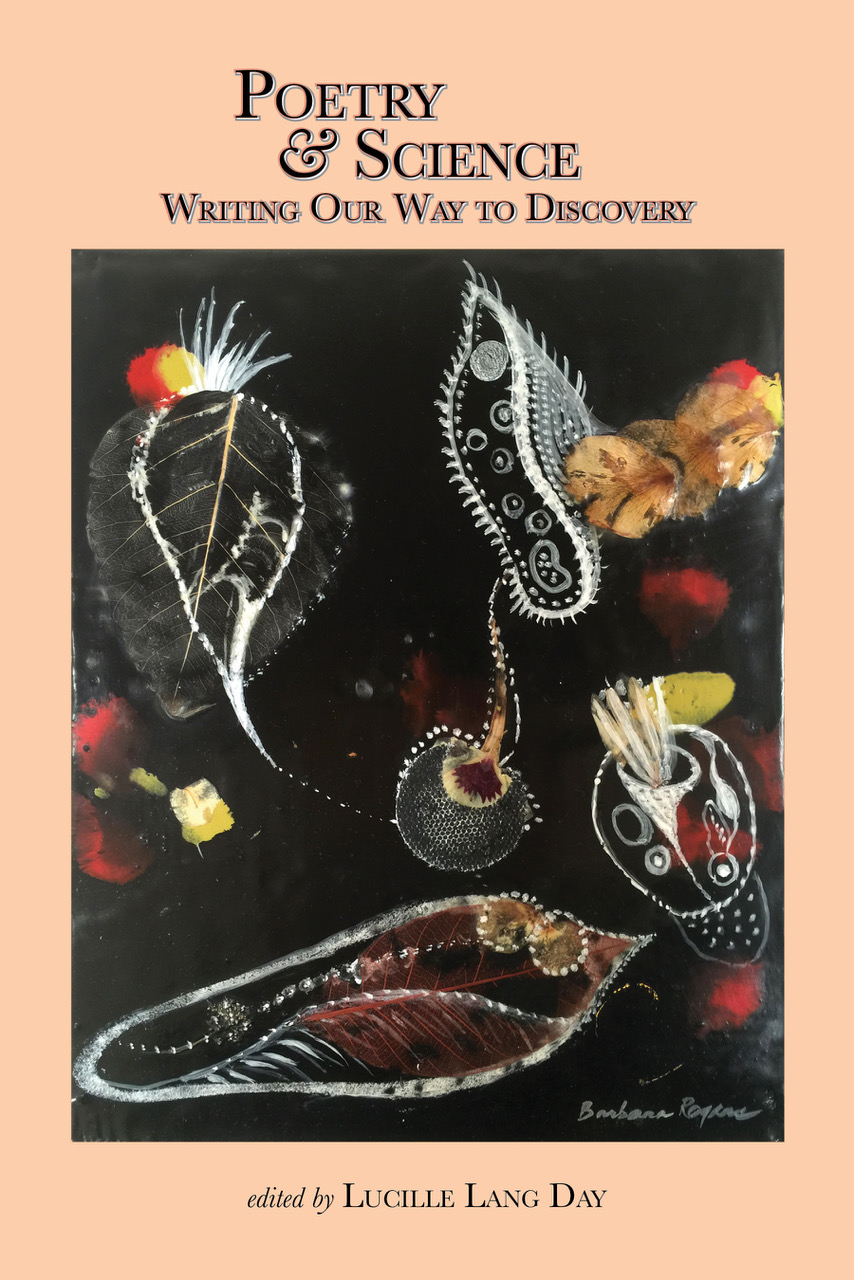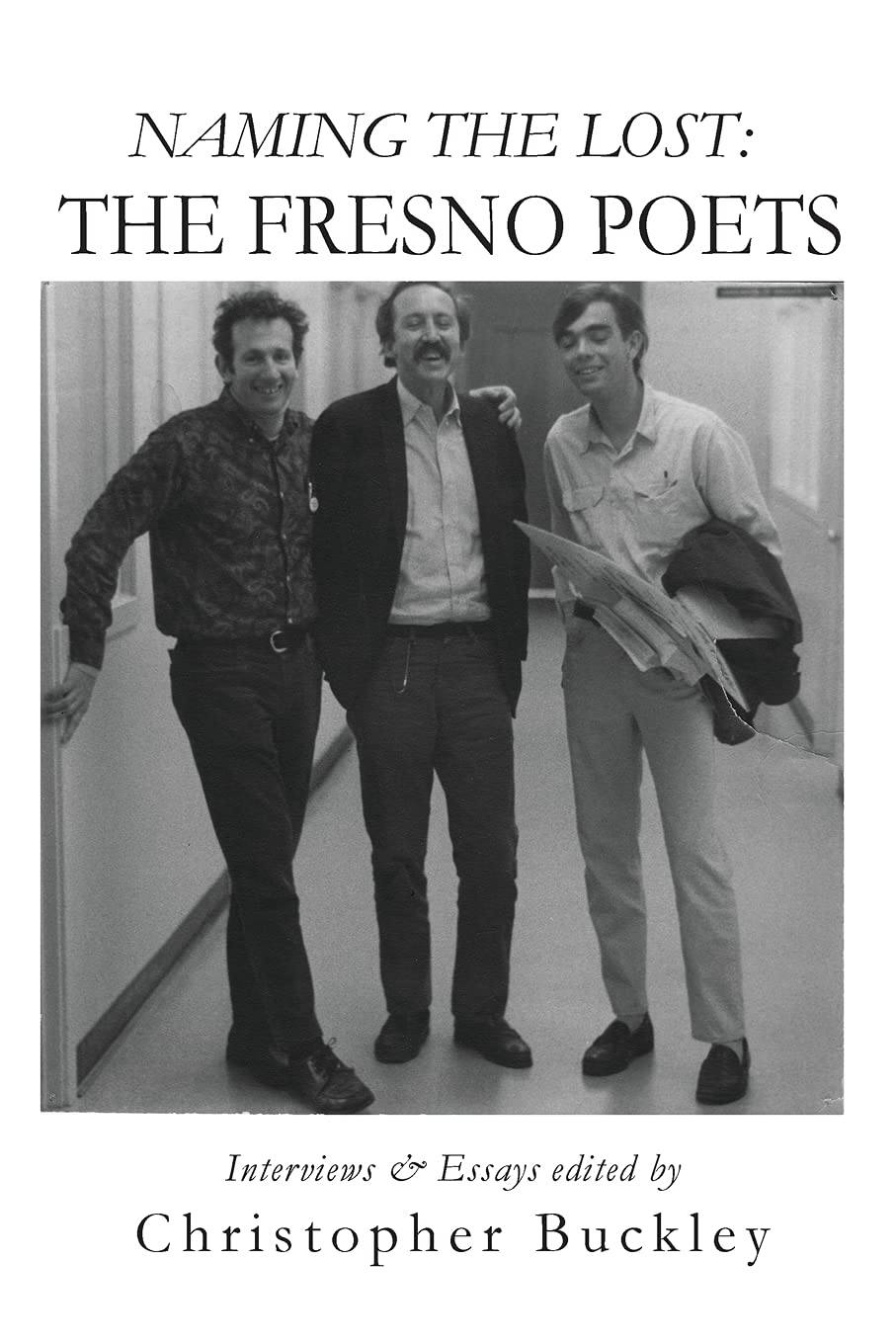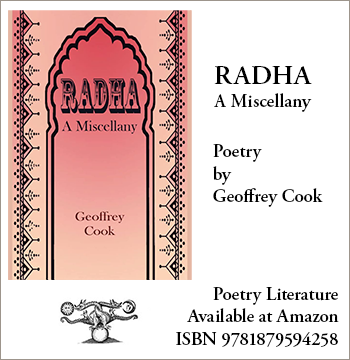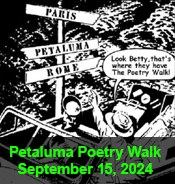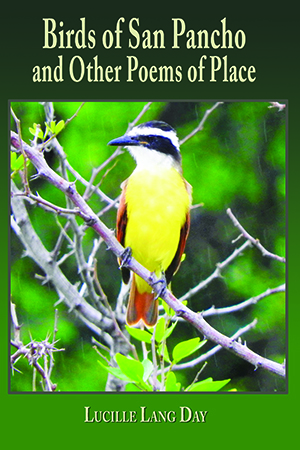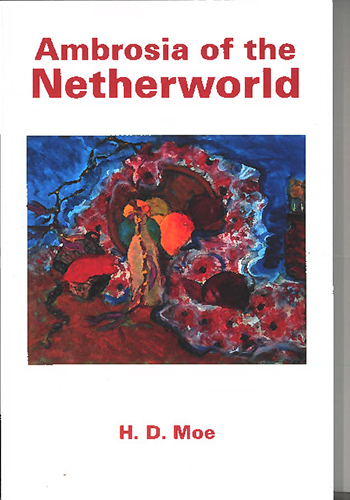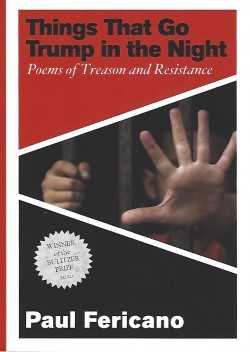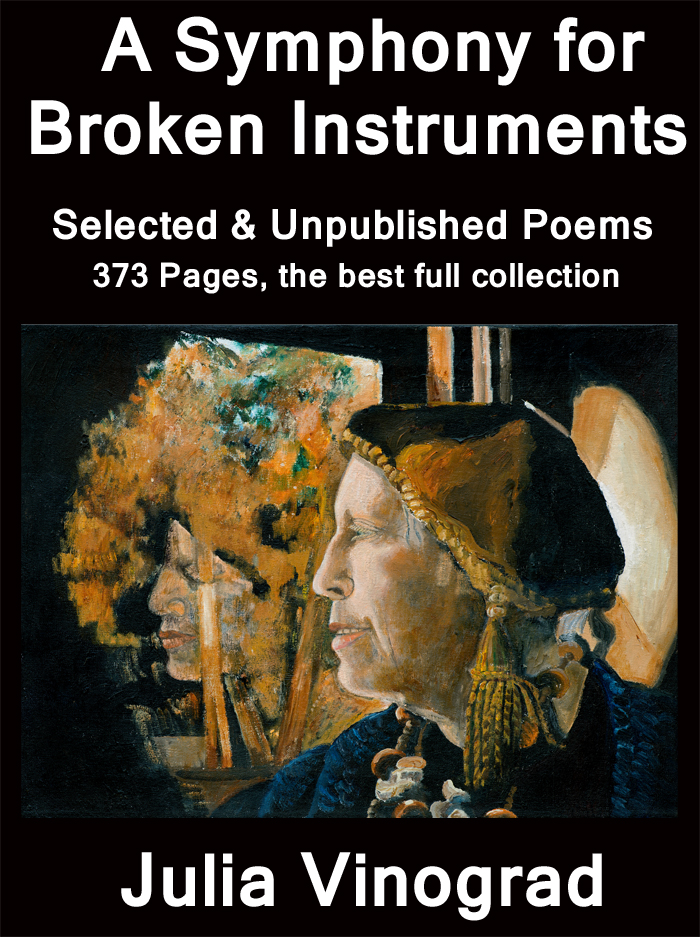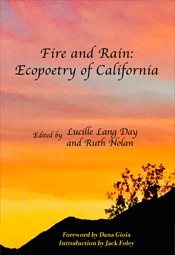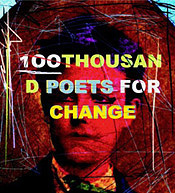
Journey with Alice
by Hermine Pinson
Ascension, by giovanni singleton, Counterpath, Denver, Colorado, 2012, 83 pages, $14.00 paperback, counterpathpress.org.
Ascension, giovanni singleton's debut collection is, in seventies parlance, a trip—in a good way. That is to say, it enjoins the reader to accompany the poet on her journey, on her pilgrimage into light, darkness and the sound of consciousness, into the realm of spirit, dream and reality, across temporal borders, sound barriers, and between life and death. The collection of poems, many written as visual or concrete poems, is divided into five sections in dialogue with each other as they chart the poet's progress. As this collection owes a debt to the poet's practice of Buddhism and its response to the art and artistry of Alice Coltrane, the spiritual nature of this enterprise, steeped in Buddhist practice, is evident in overt but also subtle ways. For example, the number "5" has deep significance in Buddhist and biblical symbology. In Buddhism there are the five families or kulas of Buddha; five Skandhas; the five chakras; five forms of disaster; the five wisdoms; the five forms of desire, and so on. In the Bible, there are the five mysteries; five is the number of God's grace. Without dogma or pretentiousness, the volume unfolds as living words eschewing linearity, while aiming to ascend to enlightenment. Each section is its own instruction in astral flight.
I would daresay the serial poems of this volume map a trajectory that morphs from invocational chant (in the form of the visual poem) to the thing chanted, the circle, symbol of the one, the I, the many, infinity, the universe. The collection's multi-dimensional references to rhythm and cycles are elements of music and time, keeping it, letting it go, riding it, elements also consonant with the improvisations of Alice Coltrane, the volume's muse and core.
The first page of the second section, "ear of the behearer," notes that this series of poems comprises a "daybook composed during musician and spiritual leader Alice Colrane's (Swamini Turiyasangitananda) "49-day transition through the bardo (the intermediate states between death and rebirth)" (p.5). Alice Coltrane makes her transition, and the poet, equipped with the tools of history, memory, and dreams, makes a parallel journey in visually provocative poems that improvise on spiritual excavation. Poems in this section establish some of the themes for the entire collection: journey, ritual, crossing borders, liminality, meaning, the nature of spirit, fundamental questions about the meaning of life, the circle that is infinity. "Day 1" of the "behearer" section reads like a chant, a call, as if the poet is girding herself for the journey. "Day 2" reveals that the journey is many things, among them, an interior quest: "blues poet…reaches his hand around / to his left side, slits himself / open as if to gut a fish" Using her pen as scalpel, the poet figuratively "slits" herself open and dives inside to see what she can see and what sees her. "Transition" denotatively marks movement from one place to another, traversing borders (certainly of form and genre and discipline). If Alice Coltrane travels betwixt the "intermediate states of death and rebirth," then singleton makes her own journey between reality and dream, using the poem's kinetic form to inspire the text, to literally make it a living thing. singleton observes the temporal markers of days, while crossing linear and generic borders, negotiating the space between dream, reality, history, and consciousness. However, instead of providing the reader with an explanation or even a description of what the quester hopes to discover, the poem leaves the reader with a question, "what then / can a pearl be?" so that she ultimately presents a kind of Zen koan which ushers the reader on to follow the "blues poet" who, in turn, directs the reader to consider, not the nature of the poet's interior but the nature of the "pearl," which is, of course, analogous to the poet's journey. Could the poet's allusion to "blues poet" and "indigo" be a playful allusion to singleton's friend and fellow California-based poet, Indigo Moor who happens to know a thing or two about the blues?
At any rate, these poems require the reader's active participation in the discovery and/or recovery of truth, light, God, and self. The poet, as "Day 3" announces, is "determined to witness," but in order to do so, s/he must be open like the "irises" to what s/he finds. The reader is enticed by the poet's declaration on this pilgrimage into the heart that reveals many marvels on the way to/through God, the self.
singleton evidences the sources of her identity as a black woman in her identification with Alice Coltrane; as well with black women ancestors whose presence she feels on this journey with Alice. See "Day 27" which explores the fluidity of boundaries, the risk and also the joy of experiencing the transitional space between past and present, between death and life, as the speaker declares:
all that day
labored breath
the dead brushed
against me
(page 36)
The "litany of faces," from Sojourner Truth to Shirley Chisholm to Lynn Thigpen, having in the poet's estimation achieved enlightenment, bring joy to the speaker in the realization of theirs and her "liberation," which singleton sonically characterizes in the Dickinsonian image of "the soul's cast iron / clapper." There's the humor and second sight of "Day 34" in which "a woman hears / a train that / isn't there // nevertheless, its / passengers and their / baggage get to where / they're going."
This section contains some of singleton's best poems and reveals her engagement with multiple aesthetic traditions, including the experimental tradition of the visual or concrete poem, going back to the Greeks in second century Alexandria, the jazz or blues poem going back to Langston Hughes and Michael Harper, speaking of whom singleton practically conjures in "Day 39." The title of this poem could very well be "black girl" in its signifying allusion to Michael Harper's "Brother John," whose speaker declares in this poem celebrating the music and manhood of John Coltrane, "Black man: / I'm a black man; / I'm black; I am— ." Now, consider singleton's apostrophe:
black girl. u a blk gurl. black girl. play on
blacktop. play. girl. black. u a blk gurl. jump
down. turn around. black girl. sing. pretty.
(from "Day 39")
In "Jazz Prosodies: Orality and Textuality," (Callaloo, Winter 2002), Meta DuEwa Jones convincingly argues that perhaps Harper's structural modifications and "stuttered repetitions, "I'm black; I am—," I'm a man; black— / I am—man; I am; I am;" are intended as "ironic appraisals of codified concepts of race or gender," which she characterizes as evidence of the poem's implicit endorsement of the "Black cultural nationalist position" popular in the seventies. If this is the case, then singleton's poem comments on Harper's insistence on the cultural and spiritual impunity of black manhood as genius. However, instead of Harper's predominant use of the first-person declarative, singleton employs the third person to reveal the archetypal gestures of black women for whom "play" in the denotative sense of games and the connotative sense of creativity is as crucial as it is for black men, especially given, for example, the nature of Alice Coltrane's "play," which created such spiritually and intellectually invigorating music. Think of, say, "Journey In Satchindananda" and "Translinear Light."
You almost want the book to end on "Day 49," until you come to the mid-section poem in "exodus." In this bifurcated poem, with words on one side, then a line, then symbols running vertically down the page, the poet begins with the idea of rebirth and fulfillment in images of the "lotus flower" and an "astral stream of inky wings fluttering skyward," and it's as if we are in territory that is knowable but also mysterious and unknowable, as the symbols suggest personal graphs excavated from the interior. The speaker takes refuge in her "cranial [house]," with T. Monk, reminding you that this journey has always also been about the play of music, sounding [in] the universe, in the body, of the body. Of course, as she does throughout, singleton demonstrates her own playful proclivities, as when, in the sixth stanza the speaker says: "here they go / here they go / here they go," alluding to arguably the most recognizable phrase of King Pleasure's "Moody's Mood for Love," "There I go / There I go, There I go," again as in her Harper allusion, turning the inward-turning first-person outward to third-person, both embracing and resisting the solipsistic "I."
The fourth section of the book, "melanin suite," meditates on the nature of color, burnt umber, dark brown, sepia, bronze, sienna, mahogany, brown, as it is also a continuation and elaboration on the poet's journey. This poem contains nine movements that range from "1st movement: burnt umber," to the "9th movement: brown" and renders history, consciousness, spirit, and feeling as synaesthesia. So that color is sound (always sound), action or stasis in the way it is also "silence. a guard rail." Riffing is the modus operandi but the latent scaffold is history, as for example, in "dark brown":
sitting in a darkened hallway.
salt water bodies rock
steady. muffled pounding. door
of no return. closed and
closer.…
(page 66)
The poet sifts consciousness (personal and historical) for words that recall slavery and middle passage: "salt water bodies" and "door of no return." At their best the poems in this section invite the reader to be, in the infinitive, centered and knowing. When the poems drift, as, for example, in the "5th movement: sienna," ("we us and thou. voices sound a downtown destination. the boulevard. / horns blow. fast and furious. ghostly drummer makes flight. some rap," we go with it, even if we find ourselves in a twenty-first century waste land.
That said, from the first visual poem, which forms the first section, "the odds," to the last, "eye of the be/holder," the poet images dialectical movement in poems shaped like circles, poems attentive to caesuras and line spacing, but this movement, in dialogue with itself, past, present, and future, calls and responds, calls and responds, ad infinitum. So that the circle that is the very first poem starts wherever you catch it on the wheel: "pray pray pray read the leaves roll the dice shuffle the cards lay the runes write some poems and pray pray pray…" The final poem of the volume and the last one in the "eye of the be/holder" section is a black dot, a filled in whole, a whole note, a period, the dotting of an "I," an eye, all these things and more.
singleton recently received the California Book Award Gold Medal for Poetry for this most excellent volume, which showcases not only her passion for poetry, her love of the avant-garde music of Alice Coltrane, the contemplative way of Buddhism, her love of justice, ecology, and history, but also her expertise in graphic design and editing. singleton brings all these things along on this memorable journey. Critics and reviewers of Singleton's debut volume, from Ed Roberson, to Lyrae Van Clief Stefanon, to E. Ethelberg Miller and others, all agree on the poet's masterful treatment of image, sound, silence, breath, and line in the service of the spirit, in the service of enlightenment, which some would say is the service of love. "Go, little book." Enlighten the world with your spare beauty and, yes, your splendor. ![]()
Hermine Pinson's third poetry collection is Dolores is Blue/Dolorez is Blues. In 2006, she collaborated with Yusef Komunyakaa and Estella Conwill Majozo on the record Changing the Changes, a fusion of jazz, blues and spoken word poetry. She teaches African American literature at the College of William and Mary.




